A novel EHD1/CD44/Hippo/SP1 positive feedback loop potentiates stemness and metastasis in lung adenocarcinoma
- PMID: 35485206
- PMCID: PMC9786223
- DOI: 10.1002/ctm2.836
A novel EHD1/CD44/Hippo/SP1 positive feedback loop potentiates stemness and metastasis in lung adenocarcinoma
Abstract
Background: There is growing evidence that endocytosis plays a pivotal role in cancer metastasis. In this study, we first identified endocytic and metastasis-associated genes (EMGs) and then investigated the biological functions and mechanisms of EMGs.
Methods: Cancer stem cells (CSCs)-like characteristics were evaluated by tumour limiting dilution assays, three-dimensional (3D) spheroid cancer models. Microarray analysis was used to identify the pathways significantly regulated by mammalian Eps15 homology domain protein 1 (EHD1) knockdown. Mass spectrometry (MS) was performed to identify EHD1-interacting proteins. The function of EHD1 as a regulator of cluster of differentiation 44 (CD44) endocytic recycling and lysosomal degradation was determined by CD44 biotinylation and recycling assays.
Results: EHD1 was identified as a significant EMG. Knockdown of EHD1 suppressed CSCs-like characteristics, epithelial-mesenchymal transition (EMT), migration and invasion of lung adenocarcinoma (LUAD) cells by increasing Hippo kinase cascade activation. Conversely, EHD1 overexpression inhibited the Hippo pathway to promote cancer stemness and metastasis. Notably, utilising MS analysis, the CD44 protein was identified as a potential binding partner of EHD1. Furthermore, EHD1 enhanced CD44 recycling and stability. Indeed, silencing of CD44 or disruption of the EHD1/CD44 interaction enhanced Hippo pathway activity and reduced CSCs-like traits, EMT and metastasis. Interestingly, specificity protein 1 (SP1), a known downstream target gene of the Hippo-TEA-domain family members 1 (TEAD1) pathway, was found to directly bind to the EHD1 promoter region and induce its expression. Among clinical specimens, the EHD1 expression level in LUAD tissues of metastatic patients was higher than that of non-metastatic patients.
Conclusions: Our findings emphasise that EHD1 might be a potent anti-metastatic target and present a novel regulatory mechanism by which the EHD1/CD44/Hippo/SP1 positive feedback circuit plays pivotal roles in coupling modules of CSCs-like properties and EMT in LUAD. Targeting this loop may serve as a remedy for patients with advanced metastatic LUAD.
Keywords: EHD1; LUAD; hippo signalling pathway; metastasis; stemness.
© 2022 The Authors. Clinical and Translational Medicine published by John Wiley & Sons Australia, Ltd on behalf of Shanghai Institute of Clinical Bioinformatics.
Figures

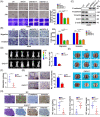


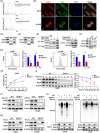
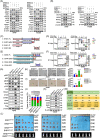
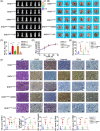
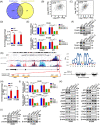
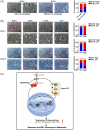
Similar articles
-
EHD1 promotes the cancer stem cell (CSC)-like traits of glioma cells via interacting with CD44 and suppressing CD44 degradation.Environ Toxicol. 2022 Sep;37(9):2259-2268. doi: 10.1002/tox.23592. Epub 2022 May 26. Environ Toxicol. 2022. PMID: 35616188
-
Mammalian Eps15 homology domain 1 promotes metastasis in non-small cell lung cancer by inducing epithelial-mesenchymal transition.Oncotarget. 2017 Apr 4;8(14):22433-22442. doi: 10.18632/oncotarget.11220. Oncotarget. 2017. PMID: 27531895 Free PMC article.
-
Mammalian Eps15 homology domain 1 potentiates angiogenesis of non-small cell lung cancer by regulating β2AR signaling.J Exp Clin Cancer Res. 2019 Apr 25;38(1):174. doi: 10.1186/s13046-019-1162-7. J Exp Clin Cancer Res. 2019. PMID: 31023336 Free PMC article.
-
Endocytosis: a pivotal pathway for regulating metastasis.Br J Cancer. 2021 Jan;124(1):66-75. doi: 10.1038/s41416-020-01179-8. Epub 2020 Dec 2. Br J Cancer. 2021. PMID: 33262521 Free PMC article. Review.
-
ITGB1BP1, a Novel Transcriptional Target of CD44-Downstream Signaling Promoting Cancer Cell Invasion.Breast Cancer (Dove Med Press). 2023 May 24;15:373-380. doi: 10.2147/BCTT.S404565. eCollection 2023. Breast Cancer (Dove Med Press). 2023. PMID: 37252376 Free PMC article. Review.
Cited by
-
CD44 Intracellular Domain: A Long Tale of a Short Tail.Cancers (Basel). 2023 Oct 18;15(20):5041. doi: 10.3390/cancers15205041. Cancers (Basel). 2023. PMID: 37894408 Free PMC article. Review.
-
Cancer stem cells: advances in knowledge and implications for cancer therapy.Signal Transduct Target Ther. 2024 Jul 5;9(1):170. doi: 10.1038/s41392-024-01851-y. Signal Transduct Target Ther. 2024. PMID: 38965243 Free PMC article. Review.
-
Characterization of platelet-related genes and constructing signature combined with immune-related genes for predicting outcomes and immunotherapy response in lung squamous cell carcinoma.Aging (Albany NY). 2023 Jul 20;15(14):6969-6992. doi: 10.18632/aging.204886. Epub 2023 Jul 20. Aging (Albany NY). 2023. PMID: 37477536 Free PMC article.
-
SP1 undergoes phase separation and activates RGS20 expression through super-enhancers to promote lung adenocarcinoma progression.Proc Natl Acad Sci U S A. 2024 Jul 16;121(29):e2401834121. doi: 10.1073/pnas.2401834121. Epub 2024 Jul 8. Proc Natl Acad Sci U S A. 2024. PMID: 38976739 Free PMC article.
-
Regulating chemoresistance and cancer stemness: the CDH17-YAP pathway in distinct cellular states of lung cancer CTC clusters.Cell Mol Biol Lett. 2025 Feb 24;30(1):23. doi: 10.1186/s11658-025-00696-9. Cell Mol Biol Lett. 2025. PMID: 39994505 Free PMC article.
References
-
- Sung H, Ferlay J, Siegel RL, et al. Global Cancer Statistics 2020: GLOBOCAN estimates of incidence and mortality worldwide for 36 cancers in 185 countries. CA Cancer J Clin. 2021;71(3):209‐249. - PubMed
-
- Siegel RL, Miller KD, Fuchs HE, Jemal A. Cancer Statistics, 2021. CA Cancer J Clin. 2021;71(1):7‐33. - PubMed
-
- Siegel RL, Miller KD, Jemal A. Cancer statistics, 2016. CA Cancer J Clin. 2016;66(1):7‐30. - PubMed
-
- Lortet‐Tieulent J, Soerjomataram I, Ferlay J, Rutherford M, Weiderpass E, Bray F. International trends in lung cancer incidence by histological subtype: adenocarcinoma stabilizing in men but still increasing in women. Lung Cancer. 2014;84(1):13‐22. - PubMed
-
- Travis WD, Brambilla E, Nicholson AG, et al. The 2015 World Health Organization classification of lung tumors: impact of genetic, clinical and radiologic advances since the 2004 classification. J Thorac Oncol. 2015;10(9):1243‐1260. - PubMed
Publication types
MeSH terms
Substances
LinkOut - more resources
Full Text Sources
Medical
Research Materials
Miscellaneous
